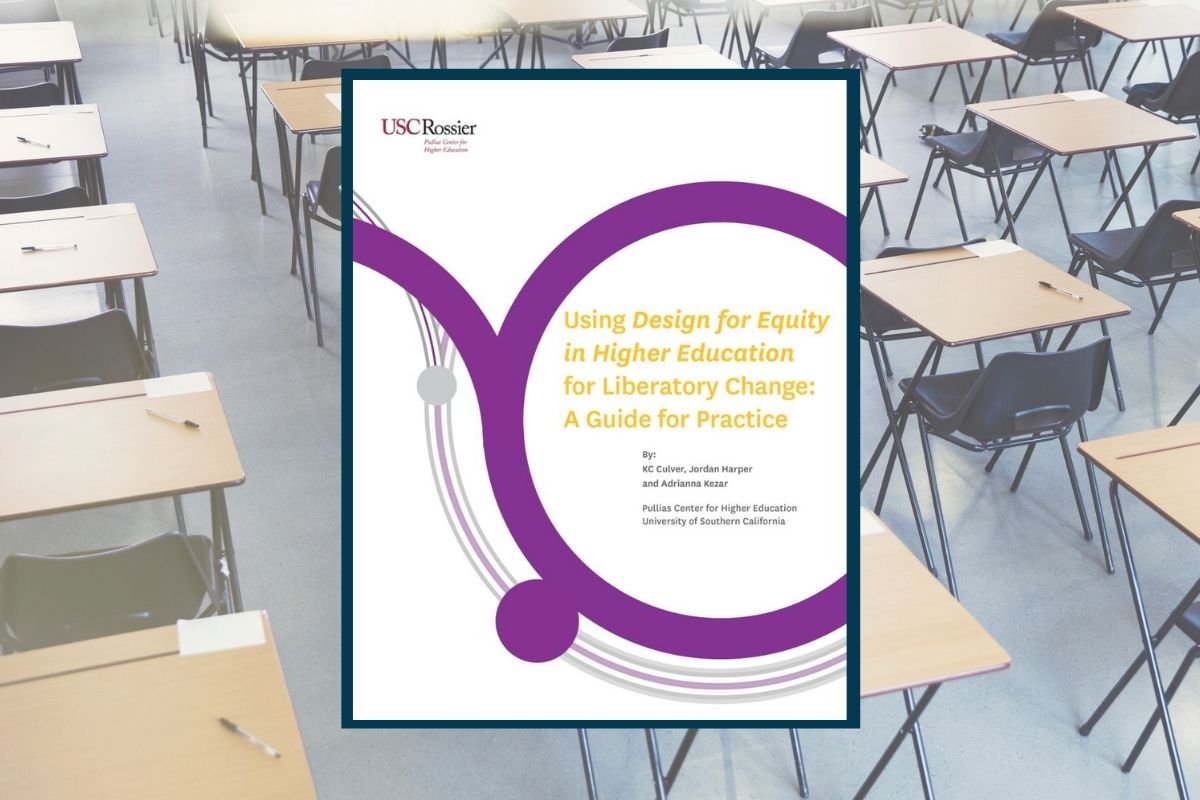
New Guide Offers a Toolkit to Facilitate Implementation of ‘Design for Equity in Higher Education’ Model
The publication is a companion piece to the recent report that introduced a new model that infuses equity-mindedness into design thinking for use in the higher education context.
The new publication, Using Design for Equity in Higher Education For Liberatory Change: A Guide for Practice, is available now for download from The Pullias Center for Higher Education. It is a companion document to Design for Equity in Higher Education, which introduced a model of the same name that puts equity front and center and considers the unique challenges in design thinking related to policy making in higher education. The research and publication were supported by funding from the TIAA Institute and the National Science Foundation as part of The Delphi Project.
Due to the pandemic and racial inequalities on campus, there is an urgent need to rethink campus policies and practices. This guide and toolkit provide a framework for achieving the needed equitable change in structures. The previous publication highlights equity-minded practices as the foundation of the entire design process while also addressing the realities of designing and implementing change in political and bureaucratic environments like higher education. The new publication helps policy-makers and practitioners put this model into practice by outlining concrete steps towards its implementation.
“The Design for Equity in Higher Education model is an important tool for surfacing equity as a key consideration in change efforts in policy-making environments,” notes KC Culver, one of the researchers and authors on the project. “This new guide serves as a toolkit to help design teams engage in the process of practically applying this model in the contexts of their campus and organizational culture.”
The Design for Equity in Higher Education model outlines eight phases for implementing equity-minded change: organize, empathize, (re)define, ideate, choose, prototype, get buy in, and test. The new guide provides an overview of the model and provides questions and suggestions to guide practice for each of the phases. The publication concludes with some additional resources and tools for fostering more equitable policies, programs, and practices in higher education.
Using Design for Equity in Higher Education For Liberatory Change: A Guide for Practice, is available now for download from The Pullias Center for Higher Education. For more information and related research visit the pages for The Delphi Project and Scaling Support for Non-tenure Track STEM Faculty through Learning Communities and Design Teams.
————————
This research is based upon work supported by the National Science Foundation under Grant No. (NSF DUE-1914784). Any opinions, findings, and conclusions or recommendations expressed in this material are those of the authors and do not necessarily reflect the views of the National Science Foundation.
This research and publication was supported by funding from the TIAA Institute. The content, findings, and conclusions are the responsibility of the authors and do not necessarily represent the views of TIAA or the TIAA Institute.